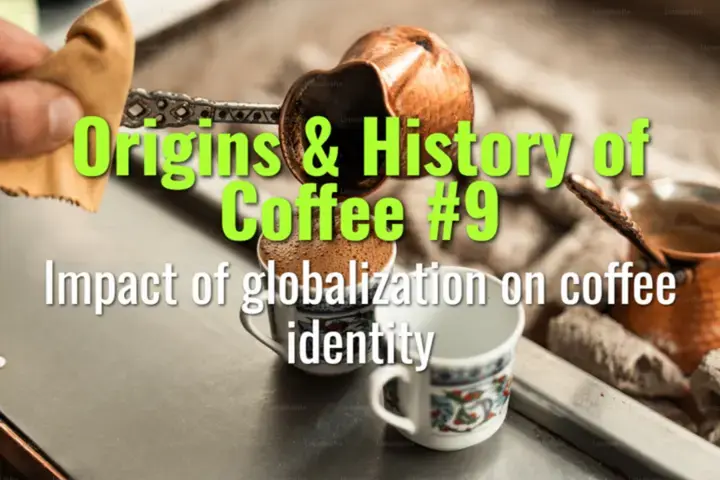Impact of globalization on coffee identity
This topic explores how globalization reshaped coffee’s identity, blending local traditions with global trade, creating both opportunities and challenges in how coffee is grown, marketed, and consumed worldwide.
- Coffee Basics Nerds
- 2 min read
Article 9 of 9 in Origins & History of Coffee/

Coffee as a Global Commodity
- Worldwide reach: Coffee is now produced in over 70 countries and consumed globally, making it the second most traded commodity after oil.
- Supply chains: Globalization linked farmers in the Global South with consumers in the Global North through intricate trade networks.
- Standardization: Industrial roasting and instant coffee created a homogenized, predictable product for mass consumption.
Cultural Fusion & Hybrid Identities
- Local rituals go global: Ethiopian, Turkish, and Italian coffee traditions spread abroad, influencing cafés worldwide.
- Hybrid drinks: Globalization birthed cross-cultural beverages like Vietnamese iced coffee, Italian-inspired tiramisu, and globally popular latte art culture.
- Chains and icons: Starbucks, Costa, and other multinationals globalized espresso-based drinks, shaping a shared café culture from Seattle to Shanghai.
Globalization’s Economic Impact
- Producer dependence: Many economies in Latin America, Africa, and Asia rely heavily on coffee exports, making them vulnerable to price fluctuations on global markets.
- Market consolidation: A few multinational corporations dominate green coffee buying and retail, concentrating power in the supply chain.
- Specialty countercurrent: While global brands standardized taste, the specialty sector emphasized origin identity, terroir, and traceability.
Identity Shifts
- From local to global: Coffee is no longer tied to one culture but has become a shared global beverage.
- Loss and preservation: Some critics argue globalization risks eroding local traditions; others see it as an opportunity for exchange and innovation.
- Café as third place: Global coffeehouses serve as communal, digital-era hubs—part workspace, part social arena.
Social & Cultural Narratives
- Coffee and migration: Diaspora communities spread their coffee practices abroad, enriching global culture.
- Marketing identity: Globalization allows farmers and roasters to brand origins (e.g., “Colombian Coffee,” “Jamaica Blue Mountain”) as symbols of national pride.
- Digital storytelling: Social media connects farmers, roasters, and consumers directly, creating a global dialogue around coffee.
Lasting Legacy
Globalization has made coffee both universal and diverse—a drink with global familiarity yet locally distinct rituals. Its identity now reflects the tensions between standardization and authenticity, mass culture and artisanal pride, shaping how billions of people experience their daily cup.